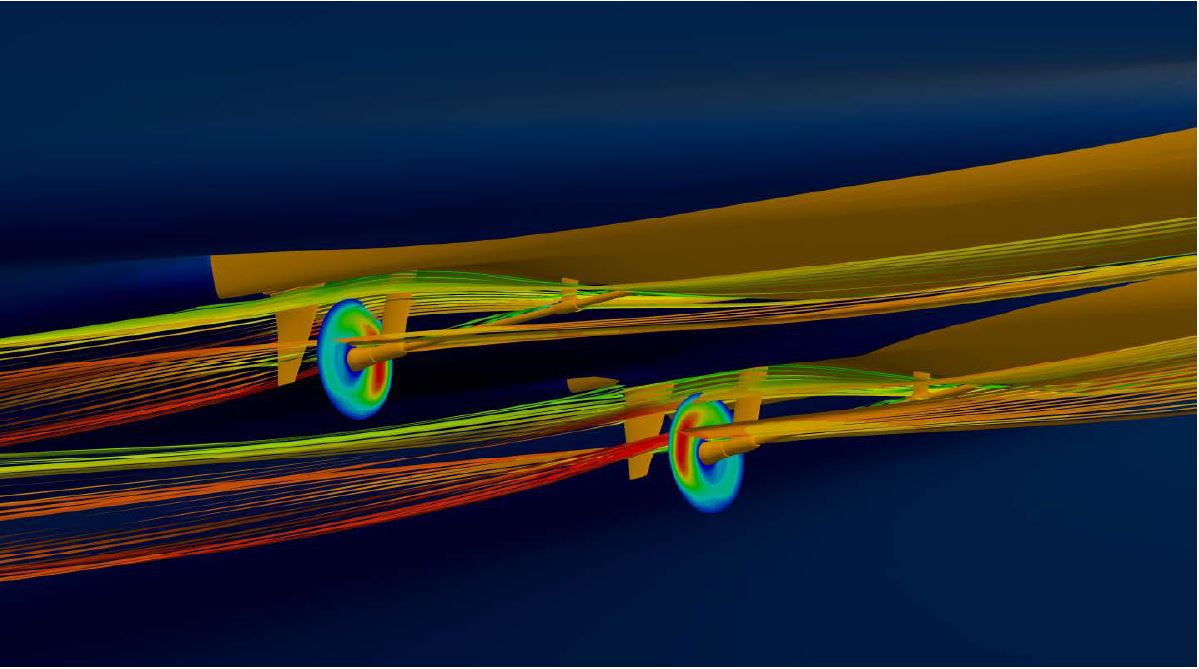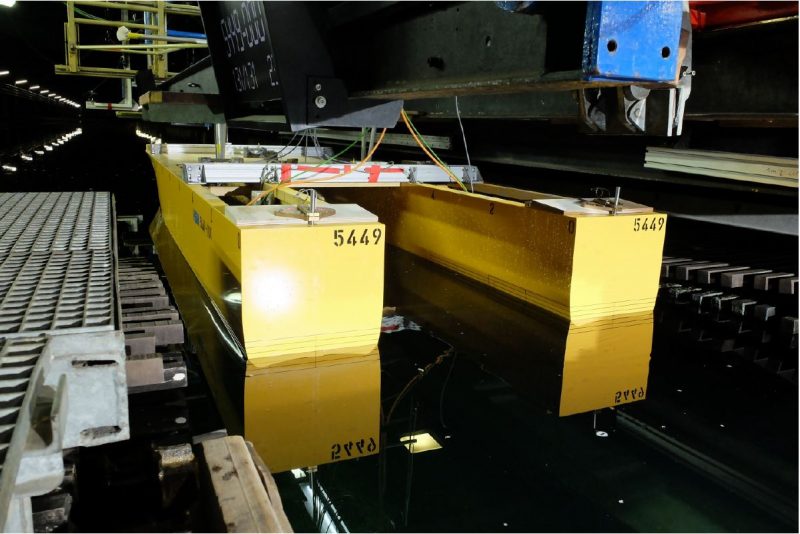
Under the EU H2020-founded TrAM project (2018-2022), a prototype of a fully electric passenger fast ferry has been developed. The Vessel undergoes detailed design and physical model testing, prior to its construction. The catamaran will start operation in Stavanger, Norway in 2022 and be part of the city´s zero emissions urban transportation system.
Within the TrAM project Hamburg Ship Model Basin HSVA is in charge of the hydrodynamic optimisation and model testing of the Stavanger demonstrator vessel. The company’s test facilities in Hamburg are among the largest in Europe with a 300 meters long and 18 meters wide tank.
In the frame of the initial design phase, a first hull form has been developed and tested in December 2019 in the large towing tank. Due to some changes in the battery arrangement, a modified hull form has been developed and tested at HSVA in May 2020. Compared to the hull form tested in December 2019, the new hull form showed improved hydrodynamic performance and reduced power requirements of over 6% at the design speed of 23 knots, while savings are higher than 10% at the speed range of 15-17 knots.
“The completion of the model testing is an important milestone in the TrAM project. The test also proves the success of our work within hydrodynamic optimisation”, says Dr.-Ing. Yan Xing-Kaeding, CFD Research Engineer and project manager for HSVA’s work within the TrAM project.

